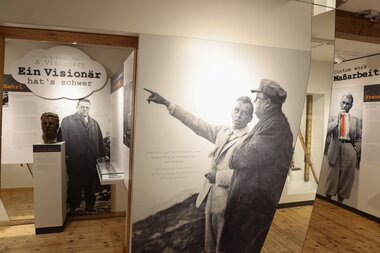Variety-packed exhibitions about nature, history & more It is not just breath-taking views and unique natural experiences that are waiting for you along the Grossglockner High Alpine Road, so too are variety-packed exhibitions which cover a wide range of themes at various locations, from natural phenomena to historic events. In other words, should the weather not play ball during your visit for once, there are plenty of things to see, experience and be amazed by indoors too!
A visit to any of the exhibitions along the Grossglockner High Alpine Road is free of charge!
Exhibition opening hours:
- Kaiser-Franz-Josefs-Höhe visitor centre: daily 10:00 to 17:00
- All other exhibitions & shops: daily 9:00 to 17:00
- Due to renovation work, the Wilhelm Swarovski Observatory will not open until around the end of June!
Exhibitions in the visitor centre on Kaiser-Franz-Josefs-Höhe
The visitor centre on Kaiser-Franz-Josefs-Höhe is open daily from 10:00 to 17:00. On an area spanning 1500m² exhibitions based on the themes of nature, the mountains, glaciers, cars and much more await …
Ground floor: National Park Information Centre
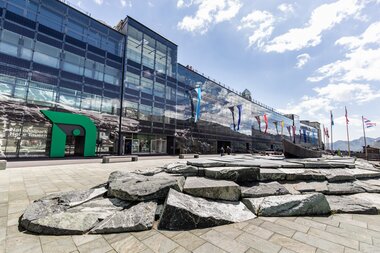
The highlight of the National Park Information Centre is the spectacular wide screen, multi-visual display with the award-winning film ‘Nationalpark Hohe Tauern’. You can also get comprehensive information here about the offers available in the Hohe Tauern National Park and book accommodation and tourist services in the National Park regions of Salzburg, Carinthia and Tyrol online straightaway.
1st floor: ‘Glacier.Life’ exhibition
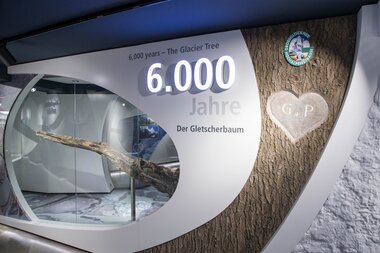
The Pasterze and the sensational find there, a stone pine more than 6000 years old – the ‘glacier tree’ – became an allegory for two lovers who could not find their way to one another. The mighty ice giants and the hidden treasures buried beneath the icy masses. However, the exhibition shows that nothing lasts for eternity, not even the eternal ice. After all, it has been revealed time and again over the millennia – the glacier is a living entity. It grows, it retreats – due to natural fluctuations in climate and in the recent past also due to effects created by mankind.
1st, 2nd & 3rd floor: Austria’s highest automobile & motorcycle exhibition
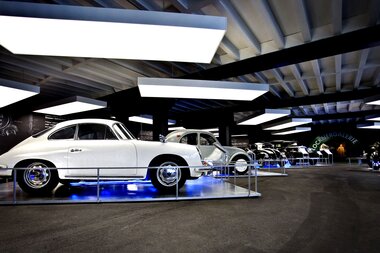
On an exhibition area spanning 1000m² you learn interesting facts about the first drive on the Grossglockner High Alpine Road and can marvel at numerous vehicles. Automobiles from 1926 to the modern era, race cars, motorcycles and 200 model cars set the hearts of automobile enthusiasts racing. The first drive on this mountain pass road took place on 22nd September 1934 in a Steyr 100, which was specifically converted to suit the narrow gravel road. The pilots during this Alpine crossing were none other than road builder Franz Wallack and state governor Franz Rehrl! The route from Ferleiten via the Hochtor to Heiligenblut took five hours – a spectacular and unforgettable time for both these road visionaries.
‘Berg, die (noun, feminine) – Women on the rise’ exhibition
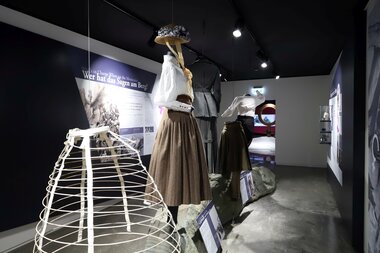
The ‘Berg, die (noun, feminine) – Women on the rise’ exhibition, is dedicated to the long path to recognition of female alpinists, telling the story of the two women who were first to scale the Grossglockner, Mary Whitehead and Anna von Frey, in August 1869. Yet it is also highly likely that local women reached the summit of the Glockner much earlier – and many other mountains too. However, the achievements of these non-aristocratic women have not been recorded and have therefore gone unrecognised. Until today that is! This exhibition highlights the outstanding achievements of women on the mountain in an exciting and entertaining way, debunking so many myths. With the interactive quiz you can check on your own prejudices and find out just how much you know about the differences and similarities between men and women.
Special exhibition: Driven by Dreams – 75 years of the Porsche sports car
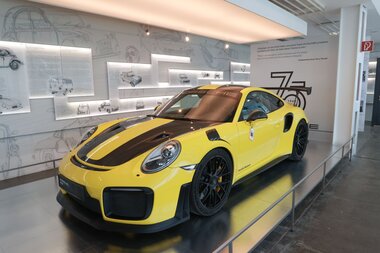
The Porsche family were and are closely linked to the Grossglockner High Alpine Road. Ferdinand Porsche – Ferry for short – often used the route as an excursion destination and as a test route. For instance, for the Porsche 356 No. 1 Roadster – the first Porsche sports car, which was produced in 1948 in the Carinthian town of Gmünd. To mark this 75-year anniversary, the exhibition ‘Driven by Dreams – 75 years of the Porsche sports car’ can be seen in the visitor centre until October 2025. Three complex themes, heritage, environmental protection & sustainability, along with innovation & technology focus on the history, the present time and the future of the Porsche company. And you can of course marvel at the original versions of the loveliest Porsche sports cars …
‘Bau der Straße’ exhibition in the Wegmacherhaus at Fuscher Lacke
At the edge of Fuscher Lacke stands the Wegmacherhaus, kept in its original form, where the permanent ‘Bau der Straße’ exhibition can be seen. With high definition, digitalised moving images, exciting interactive installations and numerous original objects, the exhibition recounts the genesis of the Grossglockner High Alpine Road, from its inception in 1924 to completion in 1935. For the first time, a new exhibition film curtain calls the people who were instrumental in the construction of this road: from engineer and road planner Franz Wallack to visionary state governor Franz Rehrl, and the legendary Glockner ‘Baraber’, the construction workers on the Grossglockner High Alpine Road. After all, without them the visions and plans of state governor Franz Rehrl and Franz Wallack would never have been realised.
Award-winning exhibition film
The exhibition film ‘Grossglockner High Alpine Road – the power of a vision’ received the highest award at the ‘Cannes Corporate Media & TV Awards 2022’, in the ‘Visitor Films’ category - the Gold Dolphin. Rated ‘worth seeing’!
Even more indoor & outdoor exhibitions
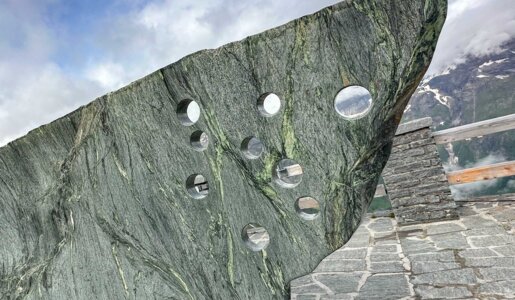
Karl Prantl, internationally renowned sculptor from Austria, celebrated his 100th birthday in 2023. To mark this anniversary, GROHAG in collaboration with Ferdinand Rudolf Porsche and Galerie Frey, are exhibiting two of his monumental stone sculptures made from Tauerngrün serpentine until summer 2024 on Fuscher Törl, at Fuscher Lacke, and Gasthof F.A.T. Mankei. Hence high culture festivals meet nature festivals!
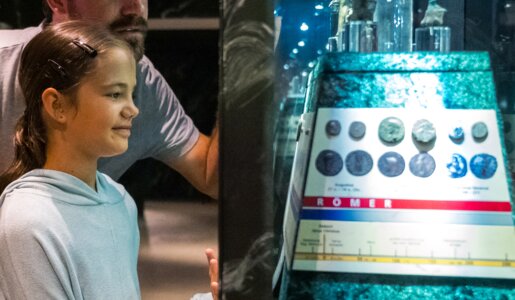
The ‘Passheiligtum Hochtor’ exhibition next to the Hochtor south portal invites you to enjoy a journey through time, through three and a half millennia, when the Glockner passage was the shortest trade route between Germany in the north and the world trading hub of Venice in the south. The exhibition recounts the search for the raw material mountain crystal and of the gold mines along the road. Did you know that only 500 years ago, some 3500 miners from the region unearthed almost 10 % of the world’s gold? Medieval fabrics and shoes, gold mining tools and the remains of a gold miners, that emerged from an ice crevice dated around 1792, provide insights of the time of treasure seekers. An eight-metre slave chain is a reminder of the dark times of the mule trail – about the trade in people via the pass, which provided Venice with galley slaves.
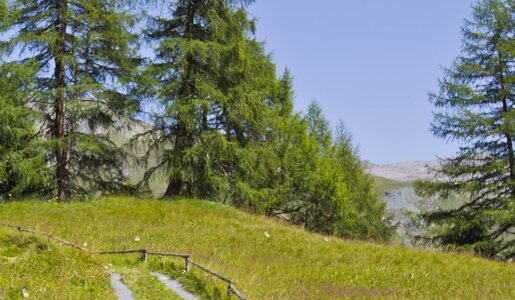
A small nature exhibition and a circular botanic path provide an introduction to the vibrant world of plants and animals in the unique Glockner meadows. Located between Gasthaus Schöneck and the Glocknerhaus, the Pockhorner Wiesen, mountain meadows filled with flowers – provide a habitat for up to 140 different types of plants on an area spanning a mere 100m². Flowers and insects live in a multi-faceted symbiosis – a fascinating world! In addition, display boards at the Sonnblick Observatorium provide an insight into the history and duties of the highest observatory in Austria, up at 3106 metres. When the weather is good you can even spy the Sonnblick nestling amid Rauris’ Goldberg Group. At the playground there is an explanation for infants about how an egg turns into a butterfly.
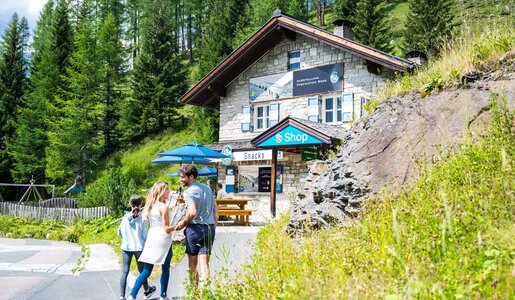
The ‘Fascination of the mountain’ exhibition in Haus Piffkar offers a comprehensive and exciting insight into the development of Alpinism. From elaborate first ascents, gold mining in the Hohe Tauern, the genesis of Hohe Tauern National Park, the role of the Alpine Association, the first cable and cogwheel railways and roads, to state-of-the-art stagings of the mountains. The exhibition also has the Fusch mountain guide flag, the oldest mountain guide flag in Salzburg.
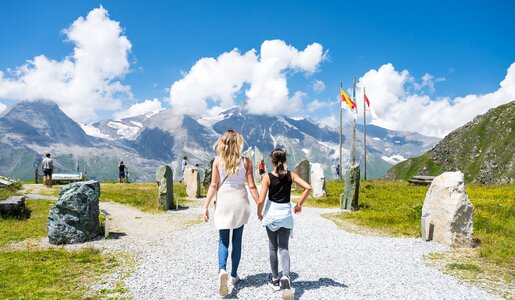
In the second part of the exhibition – at Haus Alpine nature exhibition’s outdoor area – the scene is set for the highest mountain summits in Salzburg – the giant mountains (‘Bergriesen’). From here a magnificent view to the Grosses Wiesbachhorn opens up. The highest summit, one hundred percent located in the state of Salzburg. A laid-out path proceeds direct to a monolith, which is around three metres in height and divided by a viewing gap, which enhances the view to the Wiesbachhorn. Important rocks which occur in the Hohe Tauern are also displayed here. Viewing devices for adults and children to the surrounding, prominent summits including the Fuscherkarkopf and the Hohe Dock complete this installation.
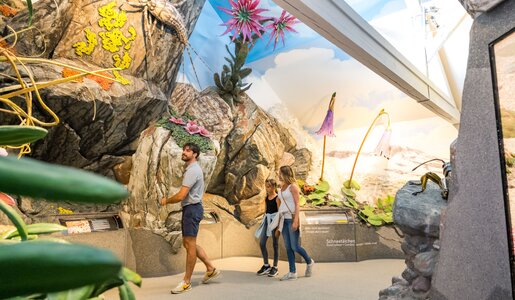
Haus Alpine nature exhibition (2260 m) is a museum, which provides guests of all ages with lots of interactive elements on the theme of Alpine ecology. Which interdependencies leave their mark on the flora and fauna in the high mountains? What survival strategies have animals and plants developed to live and thrive at this altitude? The ‘marmot cinema’ also provides an excellent insight into the Alpine nature along the Grossglockner High Alpine Road. The ‘Crystals – Treasure of the Hohe Tauern’ exhibition presents impressive examples of mountain crystals, smoky quartz and blue fluorite octahedrons from the nearby area. Tip: take a walk through the open terrain where there is an educational path and outdoor presentation.


